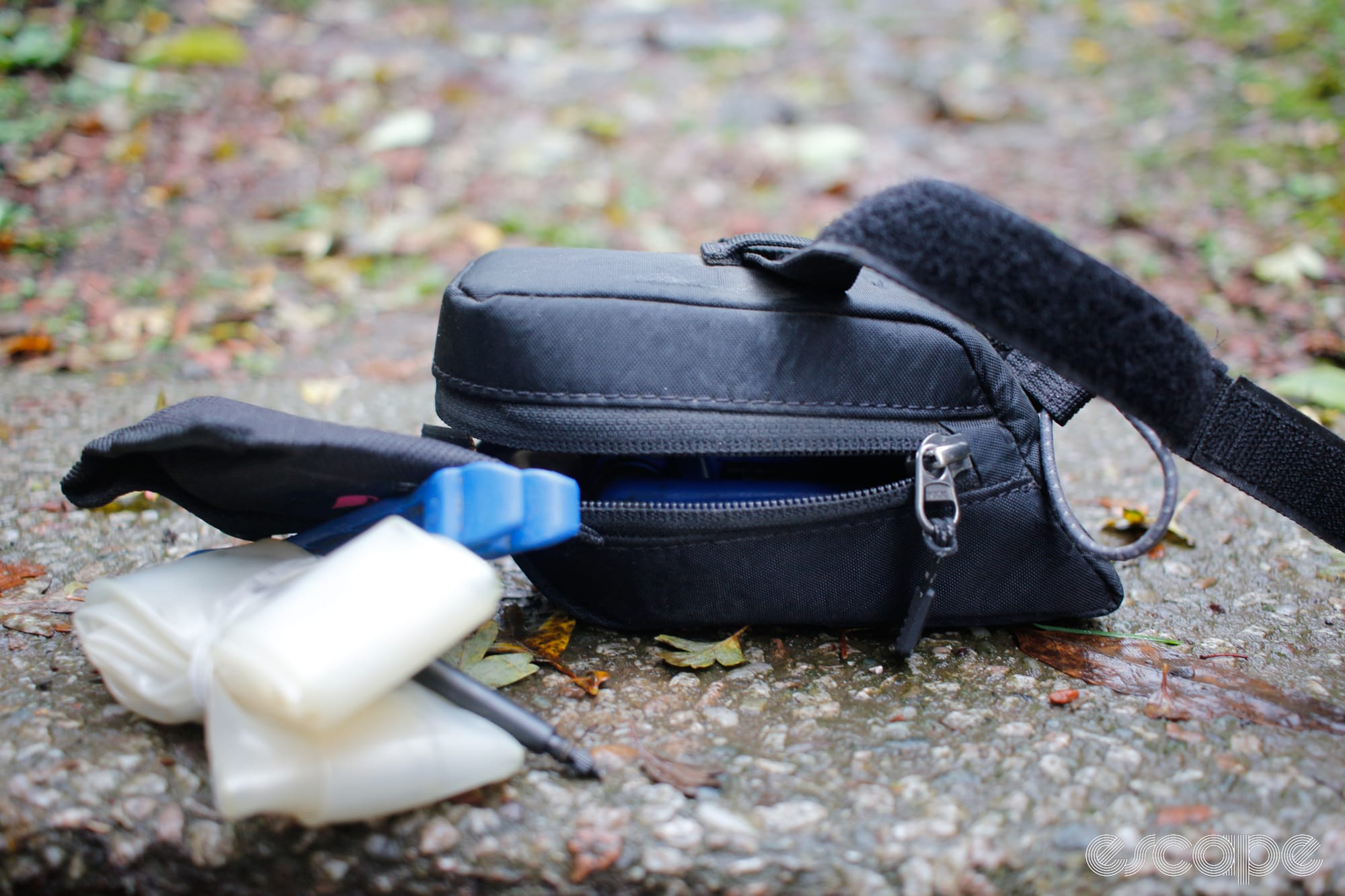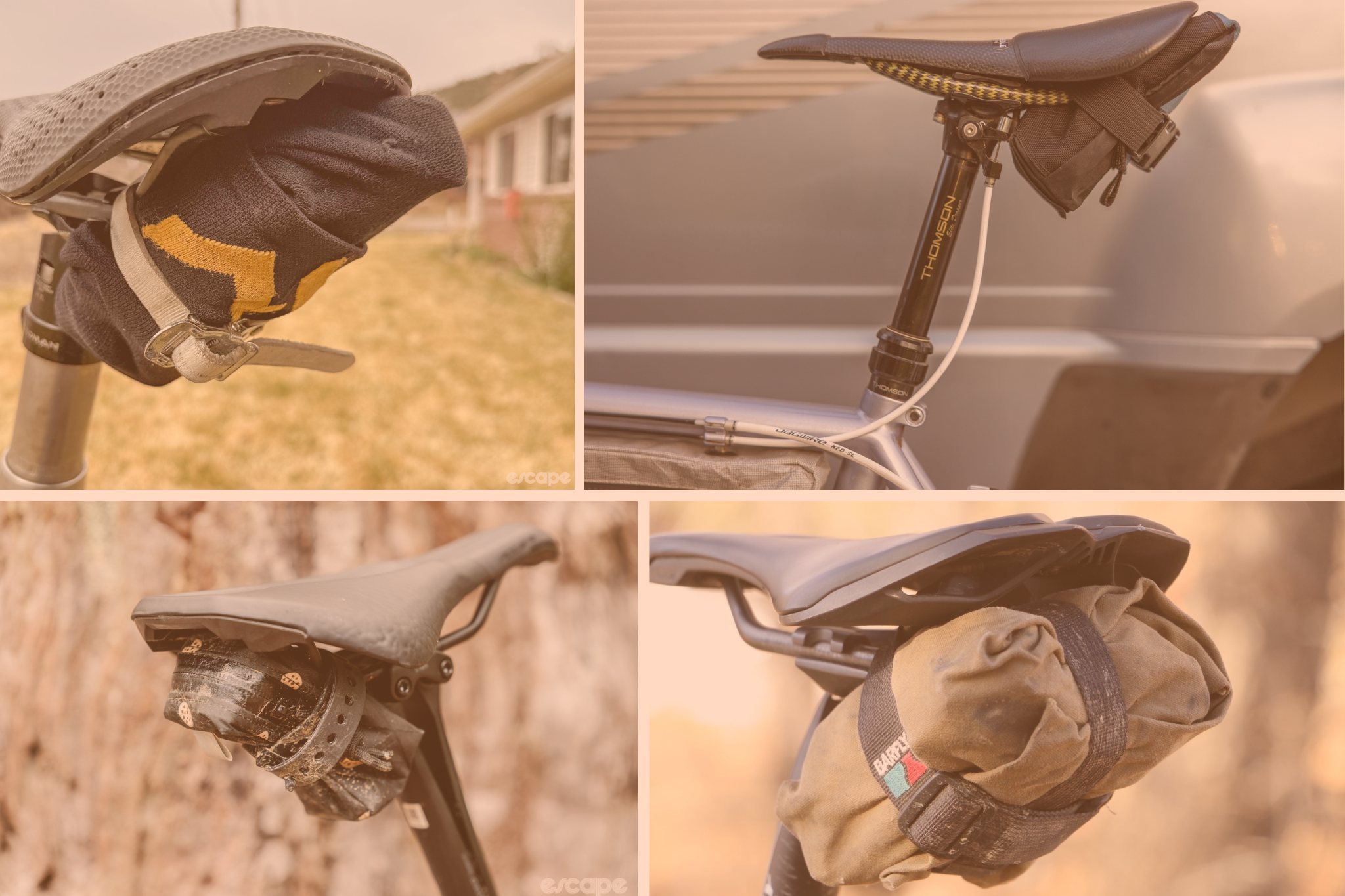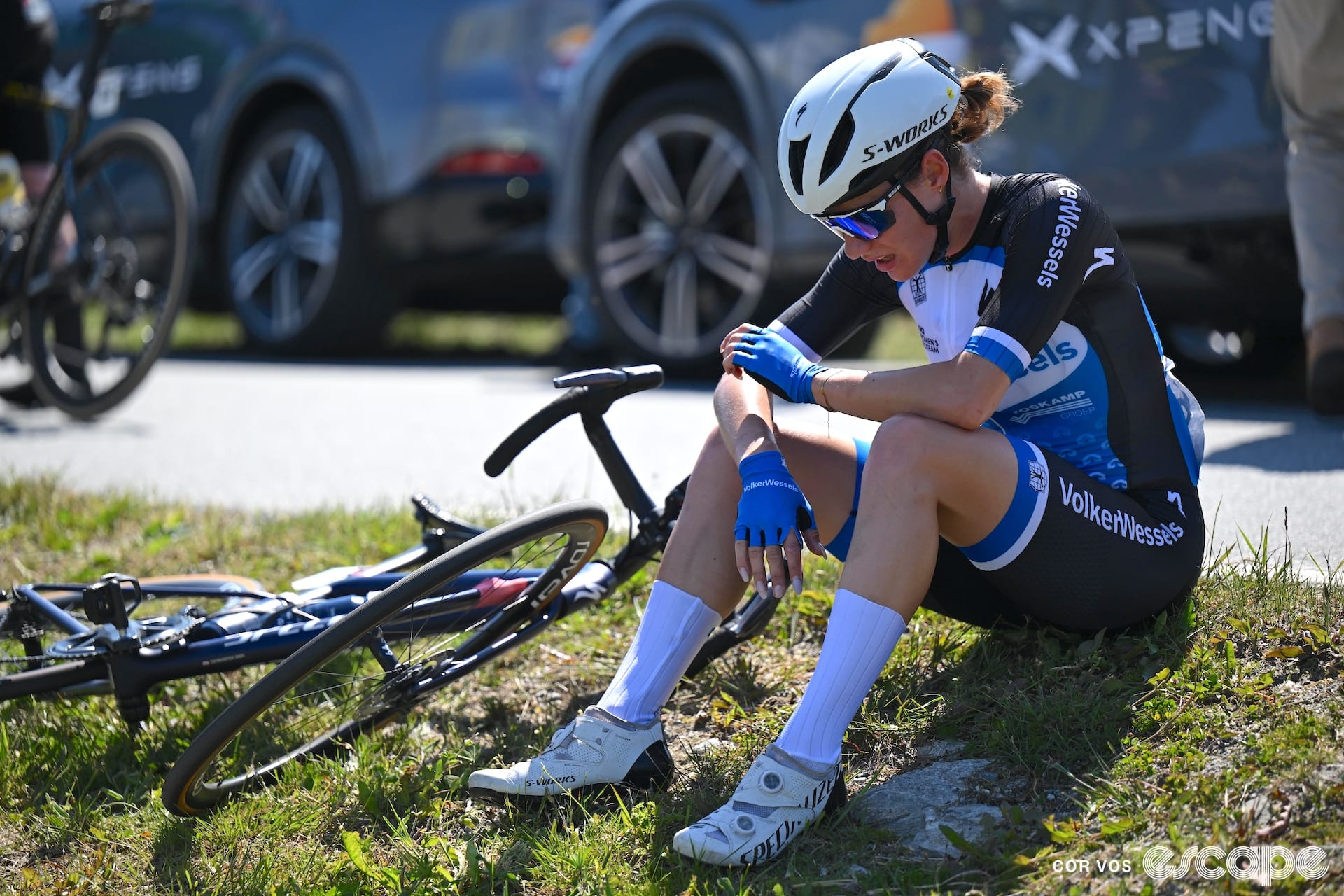For something that carries all your essential repair kit, saddle bags tend to fly a bit under the radar, yet they’ve also turned out to be surprisingly divisive. Some riders can’t stand the look of anything hanging off the back of the bike, preferring to jam tools into jersey pockets or stash spares in frame and bar bags. Others swear off baggy pockets and prize the clean lines of an unburdened frame. Simply put, there’s no one right way to carry your tools and spares – as long as you carry them somehow.
In this edition of Collective Favourites, we’re zooming in on those compact little bags (or rolls, pods, even socks) that nestle under your saddle and store your ride-saving kit. As usual, we asked our tech and editorial team what they use, and we also turned to you, our members, to see how you solve the eternal question: where do I put all this stuff on my bike?
What actually is a saddle bag?
Good question to start with is a short definition of a saddle bag, as the definitions can get fuzzy in this category. For our purposes, we’re talking about the smaller sort of saddle bags here: the kind that live under your saddle day in, day out, ready for punctures and minor mechanicals.
We’re not talking about full-size bikepacking seat packs – anything in the sub-1 litre range is the focus. Whether it’s a tool roll, a zippered bag, or a sleek little capsule, if it mounts under your saddle and carries your essentials, it counts.
What to consider when choosing a saddle bag?
The first time you get a puncture is probably the first time you realise you need to carry spares. After walking a flat-tyred bike to the nearest shop, most of us are told: bring a tube, bring tyre levers, bring something to pump it up with. And though you could toss all that in a rucksack, the saddle bag is still the most straightforward and consistent option. If it stays attached to your bike, it means you’ll always have the spares with you.
There are literally hundreds of saddle bag options out there, varying in colour, shape, closure system, and size. A good starting point is to choose something you actually like the look of – but as mentioned earlier, saddle bags are utilitarian by nature, and once you're riding, they're often – or should be – barely noticeable.
So instead of looks, start by considering the capacity you need; there is no point in having a saddle bag if you can’t fit all of your spares in it, nor is it necessary to have a massive bag for just a few things, as that can then interfere with your legs as you pedal. Enough space for a spare tube, multitool, tyre levers, CO2 canister, and a patch kit is the baseline and extra space is needed if you want to fit in an electric tyre inflator or a minipump, additional tubes, or perhaps even disposable gloves (for keeping your hands clean if you have to touch the chain/cassette). Bulky or oddly shaped bits, like a mini pump, can be mounted elsewhere on the frame or tucked in a jersey pocket, so your bag doesn’t have to fit everything.

With lots of different styles of bags comes a lot of different attachment systems. This is not something to ignore, because the way the bag attaches to the saddle rails is also important to ensure no rattling, bouncing, or swinging. The bag should stay put, even on rough gravel or MTB trails – and there are lots of different ways to achieve this. The most common way for saddle bag attachment is a Velcro strap of some sort; it will loop over the saddle rails, then back around the saddle bag to tighten the bag towards the saddle.
The downside of Velcro is that it can get full of dirt and become less sticky. That’s where other types, such as Voilé straps or simple leather toestrap, are worth considering. There are more specialised ways too; some of Silca’s bags use a Boa closure, for example (which the company also sells as a standalone item for other bags), and others come with a mounting platform that is attached to the rails and works as a base for clipping your bag onto.
Then there’s the access – a saddle bag needs to be easy to open, ideally without having to remove your gloves or wrestle with a stuck zip. Those bags that can be clipped on and off the rails are easiest to detach, but they are often a ‘bucket' style, meaning you have one large compartment that rolls closed from the end. In this type of design, you usually have to empty all the contents out to get to the multitool that has inevitably rattled to the bottom. Zipped bags or rolls are easier to open flat and remove the need to empty all the contents if you just need one tool.
Weatherproofing and durability – as we’ll get into in our picks, saddle bags are practical items and usually made to last. As such, they’re not something you buy often, and if you do replace one, it’s usually because something broke or you simply needed another one, for example, to fit all of your spares. Looking for well-made products with sturdy zippers, stitching, and material can get you a product for a lifetime.
Durable materials can also make sure your saddle bag contents stay dry. You don’t want to reach for your stash of spares only to find your multitool stiff with rust and everything else waterlogged from last week’s rainy ride. Perhaps a place for repeat of a Geek Warning PSA here: check your saddle bag contents regularly to ensure the bag has had time to dry out between rides and washes and that sharp tool bits haven't worn holes in spare tubes.
And last but not least, looks. Let’s be honest: aesthetics matter. As becomes clear from the staff and member picks below, an ideal saddle bag is discreet, doesn’t interfere with your pedaling, and is practical. Having something you hate the look of on your bike is never great.
What do we carry?
Did we do a good job with this story?




